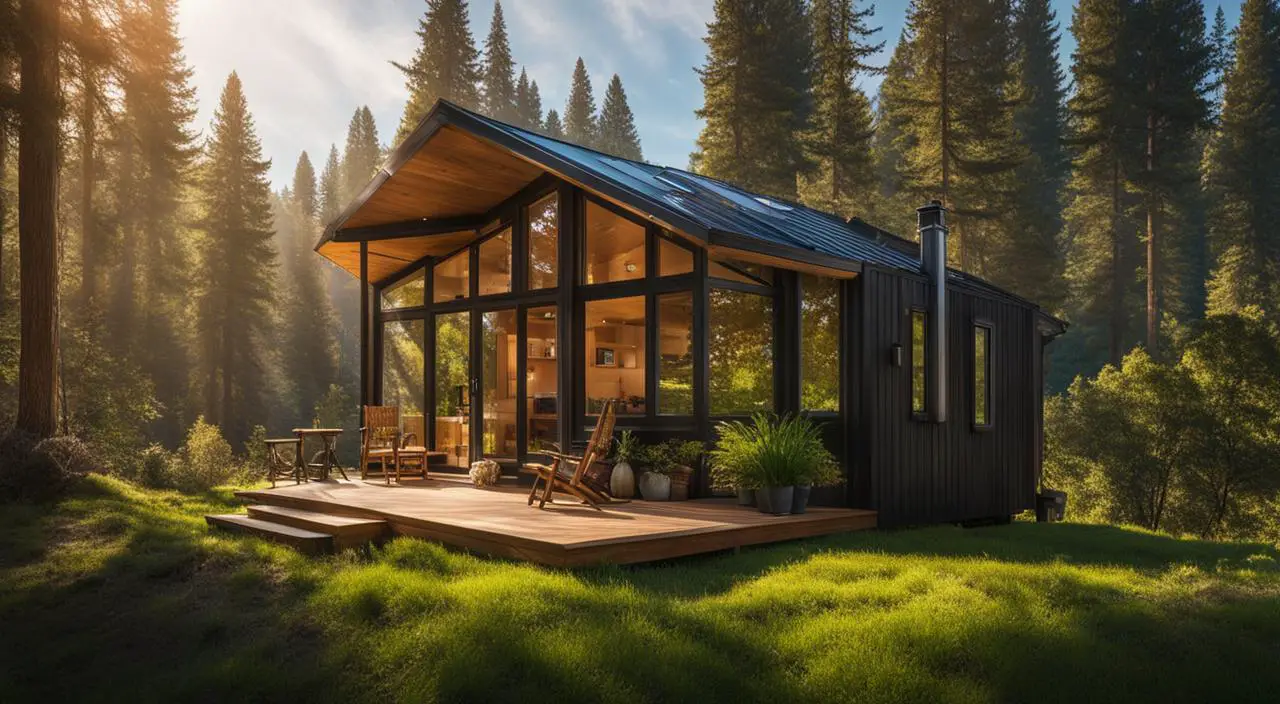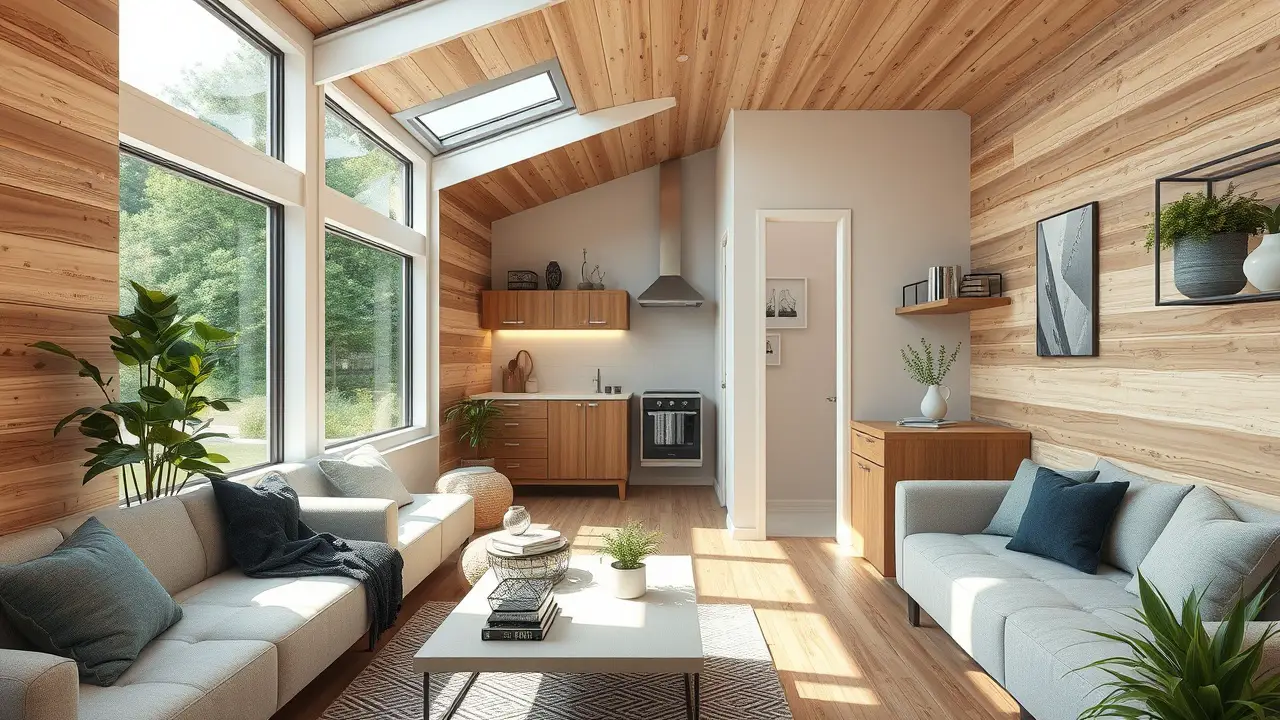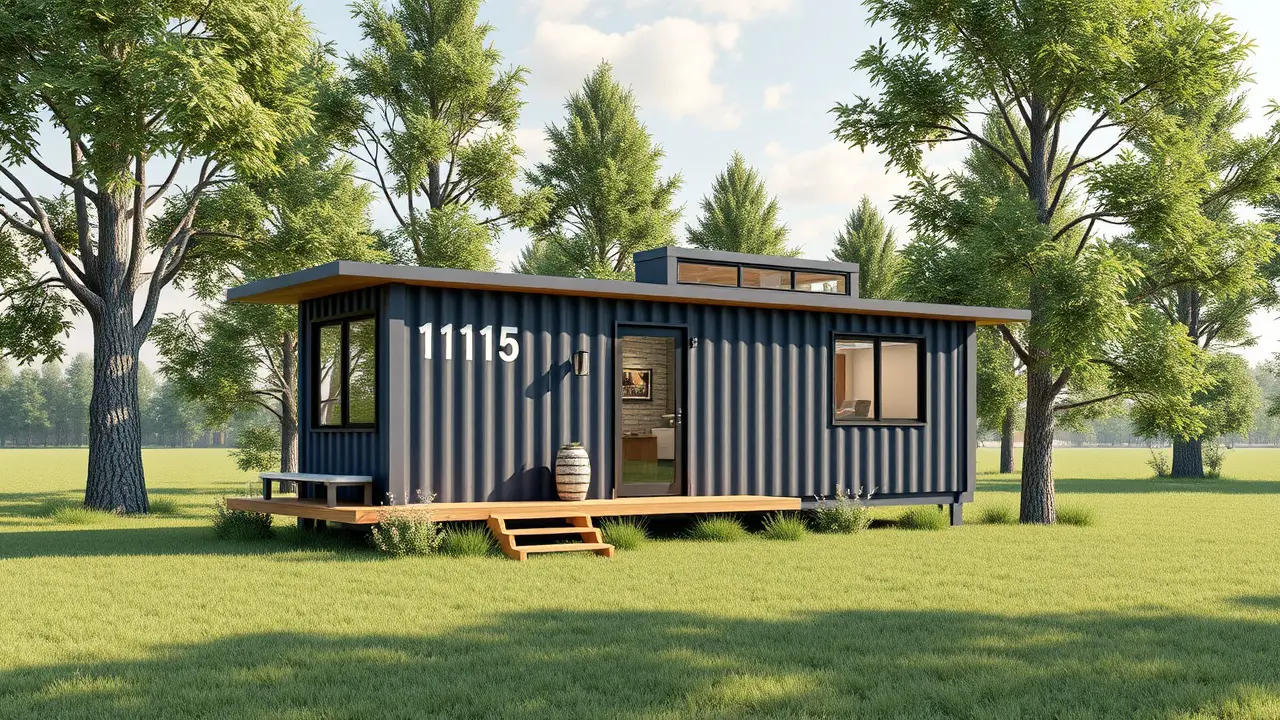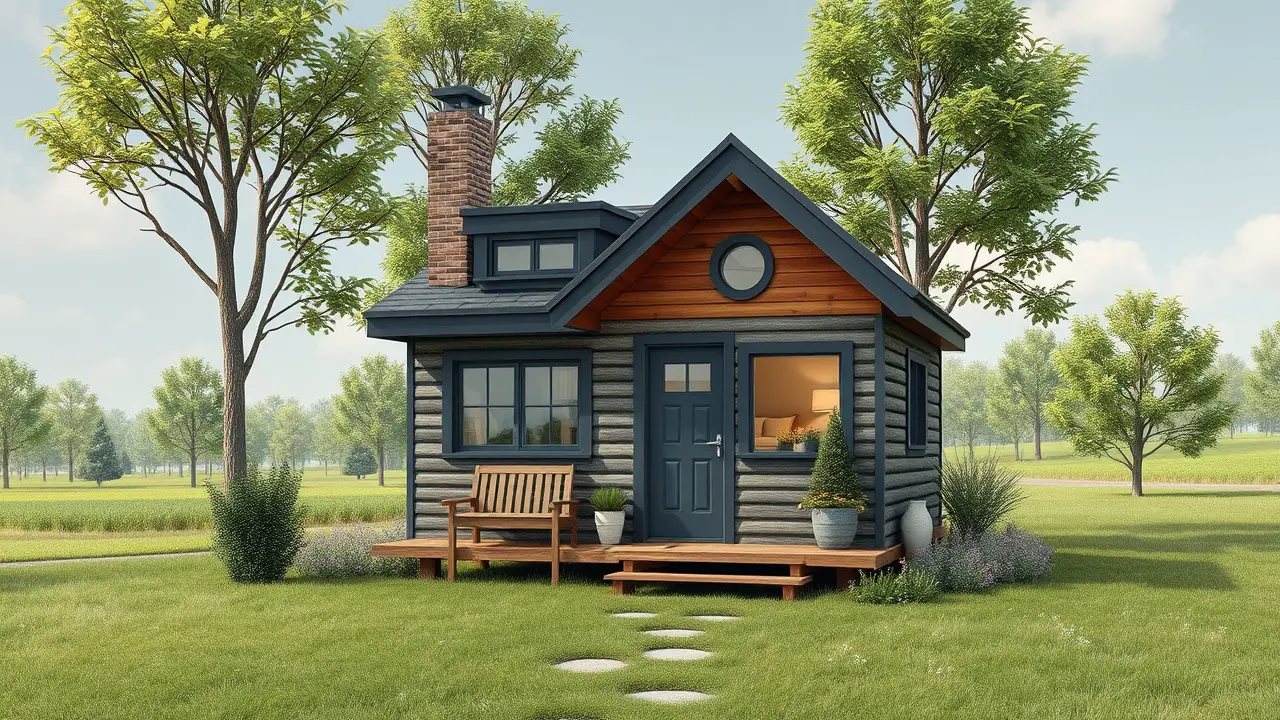Tiny house laws California: Tiny houses have grown in popularity in recent years, offering a minimalist and affordable lifestyle to those seeking to downsize.
However, understanding the legal requirements for tiny houses in California is essential to avoid costly legal issues and ensure compliance with state and local regulations.
Contents
This comprehensive guide will provide an overview of the zoning regulations and building codes for tiny houses in California, as well as legal considerations for tiny house living and the progress and challenges in legalizing tiny homes in the state.
Zoning Regulations for Tiny Homes in California

Building a tiny house in California requires compliance with strict zoning regulations and obtaining the necessary permits.
As such, understanding the legal requirements for tiny houses in California is crucial for anyone considering a tiny house lifestyle.
This section will explore the specifics of zoning regulations in California for tiny houses, including the legal definition of a tiny house, minimum square footage requirements, tiny house parking laws, and California’s tiny house communities.
Permits for Tiny Home Construction in California
Before starting construction of a tiny house in California, it’s essential to obtain the necessary permits.
The permitting process is similar to that of traditional homes, but the permit requirements may differ based on the local jurisdiction.
It’s best practice to check with the local building department to ensure compliance with all permitting requirements before beginning construction.
Legal Definition of a Tiny House in California
According to California law, a tiny house is considered an accessory dwelling unit (ADU).
An ADU is a secondary dwelling unit on the same lot as a primary dwelling unit that provides complete, independent living facilities for one or more persons.
The ADU can be attached to the primary dwelling unit, detached, or within the primary dwelling unit.
Minimum Square Footage for Tiny Houses in California
California law does not provide a specific minimum square footage requirement for tiny houses.
However, local jurisdictions may have their own regulations regarding minimum square footage, which must be taken into consideration during the permitting process.
Tiny House Parking Laws California
One of the most significant challenges for tiny home living is finding a legal place to park the tiny house.
In California, parking a tiny house is subject to local zoning regulations.
Some jurisdictions allow tiny homes to be parked in designated areas, such as tiny house communities, while others prohibit parking in certain areas.
California Tiny House Communities
California is home to several tiny house communities, where tiny home living is permitted.
These communities offer a legal and safe option for parking your tiny home, and they often have shared amenities and social events.
However, it’s essential to research the specific community’s rules and regulations before deciding to park your tiny home there.
“Tiny homes have been embraced in other states, but they have met roadblocks in California, where strict zoning and regulatory guidelines make it difficult to build them.
– The Mercury News
In conclusion, understanding the legal requirements for tiny houses in California is crucial to build and live in a tiny house legally.
Zoning regulations for tiny homes in California require compliance with permitting requirements, understanding the legal definition of a tiny house, minimum square footage requirements, and compliance with parking laws and California’s tiny house communities.
Building Codes for Tiny Houses in California

When constructing a tiny house in California, it is essential to be aware of the building codes and regulations that apply to these structures.
The California Building Standards Code outlines the specific requirements that must be met to ensure that a tiny house is safe and habitable.
The Department of Housing and Community Development (HCD) is responsible for enforcing these codes.
One of the most crucial construction restrictions for tiny homes in California is the minimum square footage requirement.
According to the California Building Standards Code, a tiny house must have a minimum of 120 square feet of living space.
This space should be designed to accommodate all the necessary functional areas, such as a kitchen, bathroom, and sleeping area.
The California Building Standards Code also sets forth guidelines for energy efficiency in residential structures.
Title 24 of the code outlines the specific requirements for insulation, ventilation, and heating and cooling systems.
These guidelines ensure that a tiny house is not only habitable but also cost-effective and environmentally friendly.
It is essential to obtain the necessary permits and approvals before beginning construction on a tiny house in California.
The HCD requires that all tiny houses be inspected to ensure they meet the California Building Standards Code.
Failure to comply with these regulations could result in fines or legal issues.
In summary, anyone interested in building a tiny house in California should be aware of the building codes and regulations that apply to these structures.
The California Building Standards Code, along with Title 24 guidelines, provides a comprehensive legal framework for constructing safe, habitable, and energy-efficient tiny houses.
Compliance with these regulations is essential to avoid legal troubles and ensure that the structure is ready for habitation.
Legal Considerations for Tiny House Living in California
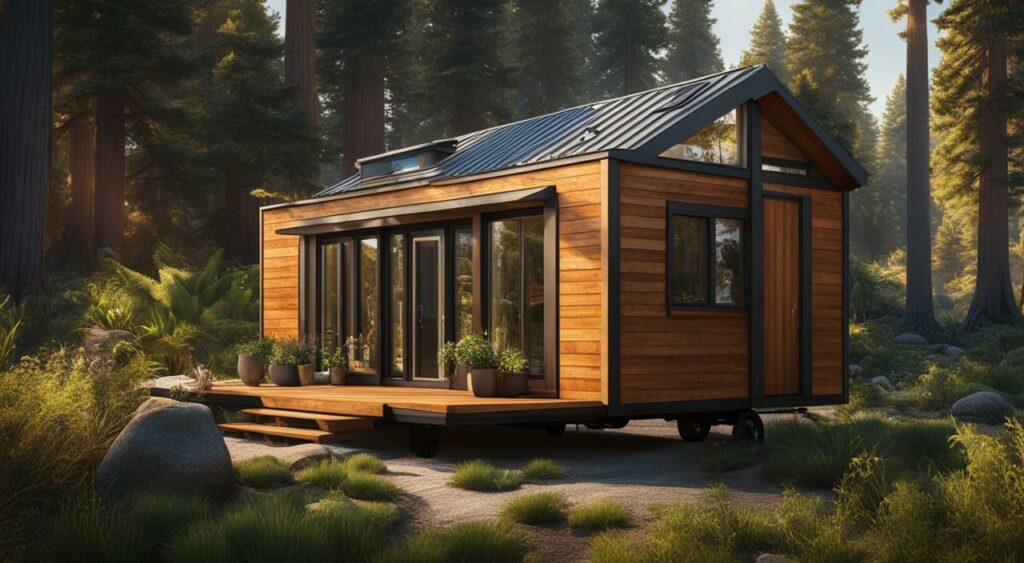
Living in a tiny house is an attractive option to many people seeking a simpler, more sustainable lifestyle.
However, before pursuing this alternative living arrangement, it’s essential to understand the legal considerations that come with it in California.
ADU Accessory Dwelling Unit
One aspect to consider is whether your tiny house is classified as an ADU, or accessory dwelling unit.
According to California state laws, an ADU is a secondary dwelling unit that is either attached or detached from the primary residence on a single-family lot.
If your tiny house meets the criteria of an ADU, it may be subject to additional regulations and requirements, such as city ordinances and inspections.
City Ordinances
City ordinances vary across California and can impact tiny house living.
Some municipalities may have specific regulations regarding the construction and placement of tiny homes, including zoning laws and minimum square footage requirements.
Researching city ordinances and consulting with local officials is crucial when considering living in a tiny house.
Inspection
Inspections are required for all new construction in California, including tiny houses.
It’s essential to ensure that your tiny house is up to code and passes all inspections before moving in.
THOWs Tiny Homes on Wheels
If your tiny house is on wheels, it’s considered a THOW and may not be subject to the same regulations as an ADU.
However, THOWs must still comply with California housing laws and environmental impact regulations.
Housing Crisis
California is currently facing a severe housing crisis, with housing costs skyrocketing and homelessness on the rise.
Tiny houses have become a popular solution to this crisis, but legal barriers to their construction and placement remain.
Advocates for tiny houses in California are working to change existing laws and regulations to make tiny house living more accessible and affordable for all.
“Tiny houses have the potential to address many of the issues facing California’s housing crisis, but overcoming legal obstacles is essential to make this housing option more widely available.”
Zoning Regulations for Tiny Homes in California
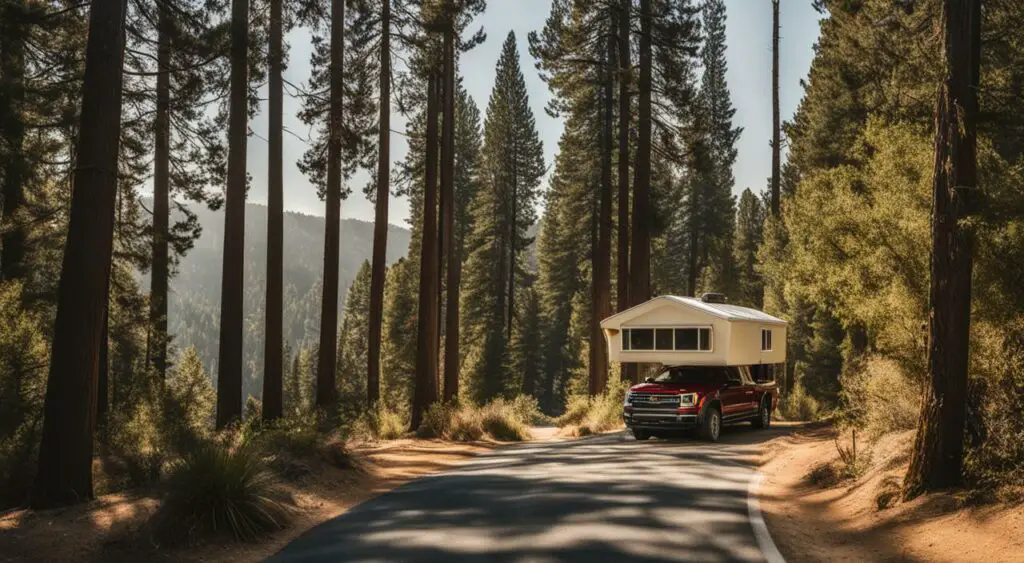
California has some of the most progressive zoning regulations for tiny homes in the country, but navigating the legal requirements for building and parking a tiny home can still be challenging.
Several factors come into play when considering zoning regulations for tiny homes in California, including permits, legal definitions, minimum square footage, and the existence of tiny home communities.
Permits for Tiny Home Construction
Building a tiny home in California requires obtaining the proper permits, just like any other construction project.
The permits required will differ depending on the location and size of the tiny home.
Some cities have specific tiny house ordinances, while others follow the California Building Standards Code.
It is essential to research and understand the relevant zoning laws and building codes before beginning construction.
Legal Definition of a Tiny House in California
It is crucial to understand the legal definition of a tiny home in California to ensure compliance with zoning regulations.
Generally, a tiny home is considered any dwelling unit that is 400 square feet or less, and it must include specific functional areas, such as a kitchen, sleeping quarters, and a bathroom.
It’s important to note that not all tiny homes are created equal, and the definition can vary depending on the location.
Minimum Square Footage for Tiny Houses in California
California specifies a minimum square footage for dwelling units, and tiny homes are no exception.
However, some cities have modified this requirement to allow for smaller homes, as long as they meet certain criteria.
For instance, the City of Fresno allows for the construction of tiny homes between 150 and 400 square feet, provided they meet specific safety and habitability requirements.
It is crucial to research and understand the minimum square footage requirements in your location before beginning construction.
California Tiny House Communities
California is home to several tiny house communities, ranging from RV parks to permanent tiny house villages.
These communities can provide an excellent opportunity for like-minded individuals to live and thrive in a supportive environment.
It’s essential to research the zoning laws and building codes in your area to determine whether a tiny house community is a viable option.
“California highways information bulletin provides important guidance to individuals seeking to legalize their tiny homes in the state.”
California Highways Information Bulletin
The California Department of Housing and Community Development has issued an information bulletin to clarify the guidelines for tiny house construction and placement in the state.
This bulletin can help individuals understand the legal requirements and ensure compliance with zoning laws.
It provides essential information on how to obtain legal approval, ensure compliance, and navigate local zoning laws.
Legal Approval and Compliance
Before occupying a tiny home in California, individuals must obtain legal approval and ensure compliance with zoning laws.
It’s essential to research and understand the specific requirements for your location, including building codes, permits, and inspections.
Failure to comply with zoning regulations can result in fines or even legal action, so it’s critical to follow the legal guidelines carefully.
Property Laws and Land Use Regulations
Property laws and land use regulations can impact the legalization of tiny homes in California.
It’s important to understand the legal framework surrounding property ownership and land use to ensure compliance with zoning regulations.
Additionally, local and state laws can impact the ability to park and live in a tiny home.
Researching property laws and land use regulations can help individuals make informed decisions regarding the placement and legalization of their tiny home.
Conclusion
California is a state with a complex legal framework that affects every aspect of tiny house living.
Throughout this guide, we have examined the legal progress, guidelines, and implications related to tiny home regulations in California.
It is important to have a clear understanding of the various laws and regulations that apply to tiny home living to ensure compliance and avoid legal issues.
The Legal Framework
The legal framework surrounding tiny homes in California is multifaceted and includes zoning regulations, building codes, and legal considerations for living in a tiny house.
Understanding the legal framework is crucial for anyone interested in building or living in a tiny house in the state.
Legal Progress
The legalization of tiny homes in California is an ongoing process, and progress has been made in recent years.
Initiatives such as the California highways information bulletin have helped pave the way for the legal recognition of tiny homes in the state.
Legal Guidelines
There are numerous legal guidelines that must be followed when building or living in a tiny house in California.
These guidelines include permits for construction, compliance with building codes, and adherence to zoning regulations.
It is important to be aware of these guidelines to avoid any legal issues.
Legal Implications
The legal implications of living in a tiny house in California can be significant.
These implications can include the potential impact on the environment and the legal status of tiny homes on wheels.
Additionally, the connection between tiny homes and the housing crisis in California is a topic of concern for many.
In conclusion, a comprehensive understanding of the various legal frameworks, progress, guidelines, and implications associated with California tiny home regulations is essential for anyone interested in building or living in a tiny house in the state.

